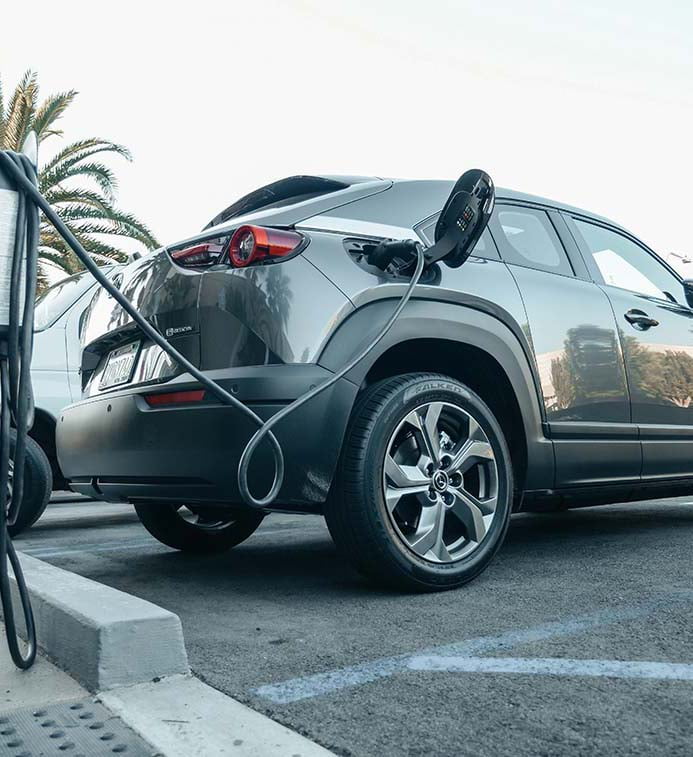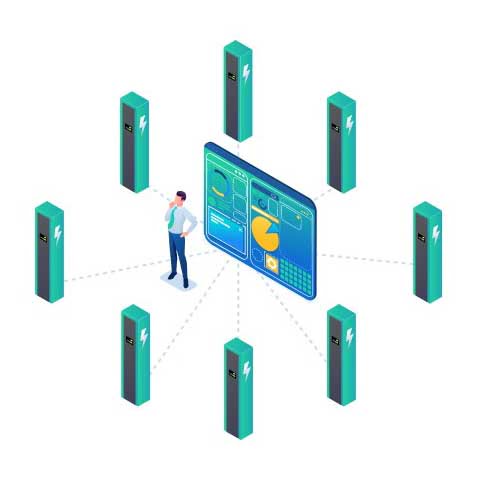FAQ and Support
SUPPORT
If you need any help, please get in touch!
Using our Contact Us function located under the Contact Us Page;
Through [email protected];
Use the WhatsApp function to contact our staff directly.



FAQ and Support
Use the MNL app to find the nearest available charger and select that station.
If you need directions to the station, select the map icon at the bottom.
- Go to the station.
- When you arrive at the station, select the appropriate connector for your vehicle from the MNL app.
- Insert the charging station connector you selected into your vehicle
- Click on the app to start the charge.
The charger will now check to see if you have a successful connection. Power flow to your car will begin. The app will now show you are charging your vehicle.
If you have signed up to receive alerts, a notification will be sent to you that your car has started a charge.
Follow these steps to start charging with MNL:
- Download the EV Charge By MNL app for iOS or Android.
- Create a user account in the app
- Add a preferred payment method, either debit or credit card.
- Open an account with MNL using a valid credit card to use the EV Charge By MNL app.
- Login to your account via MNL EV Charger App
- In the upper right corner of the screen, click on Profile > Profile
- The profile section allows you to view/update the following:
- Personal Info (excluding email address – you must contact Customer Support to change your email address)
- Make sure the vehicle is in park and is turned off.
- Verify the MNL EV Charging Station is powered on; if not, turn on power.
- During startup of the charger, the system will perform a self-test to ensure correct operation.
- Once user clicks on the “Start Session” Automatic charge begins. Power will be delivered in accordance with the vehicle’s demand. While the vehicle is charging, indicator will pulse approximately every two seconds. Always verify that the vehicle charging status indicator agrees.
- When fully charged, the indicator light illuminates. Verify with the vehicle’s “dashboard gauge” that the vehicle is fully charged. Refer to the vehicle owner’s manual to find the gauge location on the dashboard.
- Click on “End Session” via the mobile app and Disconnect when the charge is complete and remove it from the vehicle.
If the station doesn’t seem to work, you can do a reset to solve this issue. Switching off the power to the station for a couple of seconds before turning it back on. This is the easiest and most direct method. You can also reset via an app or online portal.
If you want to disconnect the connector, first ensure that charging is stopped via the charger screen. If you cannot disconnect the connector, then you can try the following tips:
The car needs to release the connector. If this is not done automatically, you can use the remote of your car keys to lock and unlock the car doors. In most cases, this will release the connector.
It could be that the connector can not be unlocked due to the weight of the cable that blocks the unlock mechanism. In that case, it helps to support the cable when you unlock the connector with your car keys.
If you cannot disconnect the connector, contact Customer Support
he time it takes to charge an electric car can be as little as 30 minutes or more than 12 hours. This depends on the size of the battery and the speed of the charging point.
A typical electric car (60kWh battery) takes just under 8 hours to charge from empty-to-full with a 7kW charging point.
Most drivers top up charge rather than waiting for their battery to recharge from empty-to-full.
For many electric cars, you can add up to 100 miles of range in ~35 minutes with a 50kW rapid charger.
The bigger your car’s battery and the slower the charging point, the longer it takes to charge from empty to full.
Empty-to-full time to charge with different chargepoint speeds:
| Vehicle | Empty to full charging time*** | ||||||
| Model | Battery | Pod Point Confidence Range* |
3.7kW slow | 7kW fast | 22kW fast | 43-50kW rapid | 150kW rapid |
| Nissan LEAF (2018) | 40kWh | 143 miles | 11 hrs | 6 hrs | 6 hrs | 1 hr | Can’t charge on this kind of charger |
| Tesla Model S (2019)** | 75kWh | 238 miles | 21 hrs | 11 hrs | 5 hrs | 2 hrs | <1 hr |
| Mitsubishi Outlander PHEV (2018) | 13.8kWh | 24 miles | 4 hrs | 4 hrs | 4 hrs | 40 mins | Can’t charge on this kind of charger |
Factors that affect charging speed
There are 5 main factors that affect the time it takes to charge an electric vehicle.
Size of battery: The bigger your vehicle’s battery capacity (measured in kWh), the longer it will take to charge.
State of battery (empty vs. full): If you are charging from empty, it will take longer to charge than if you are topping up from 50%.
Max charging rate of vehicle: You can only charge a vehicle’s battery at the maximum charge rate the vehicle can accept. For example; if your vehicle’s max charge rate is 7kW, you won’t charge any faster by using a 22kW chargepoint.
Max charging rate of chargepoint: The time it takes to charge will also be limited by the max charging rate of the chargepoint you are using. For example; even if your vehicle can charge at 11kW, it will only charge at 7kW on a 7kW chargepoint.
Environmental factors: A colder ambient temperature can make it take slightly longer to charge, particularly when using a rapid charger. Colder temperatures also mean vehicles are less efficient, so less miles are added per time charging.
Payment done with charge card: Your charging session will be settled at the end of the month via your charge card provider as usual.
Payment done via direct debit (SEPA) or credit card:
An initial reservation will be made. The reservation amount depends on the charge point type and applicable charging fee.
The actual costs will be settled immediately after the end of your charging session.
Depending on the issuer of your payment card, it can take a few days before this is shown on your bank statement.
Smoov can be downloaded and used for free. General charging fees are applicable when charging your EV. Costs will always be shown before the start of your charging session.


